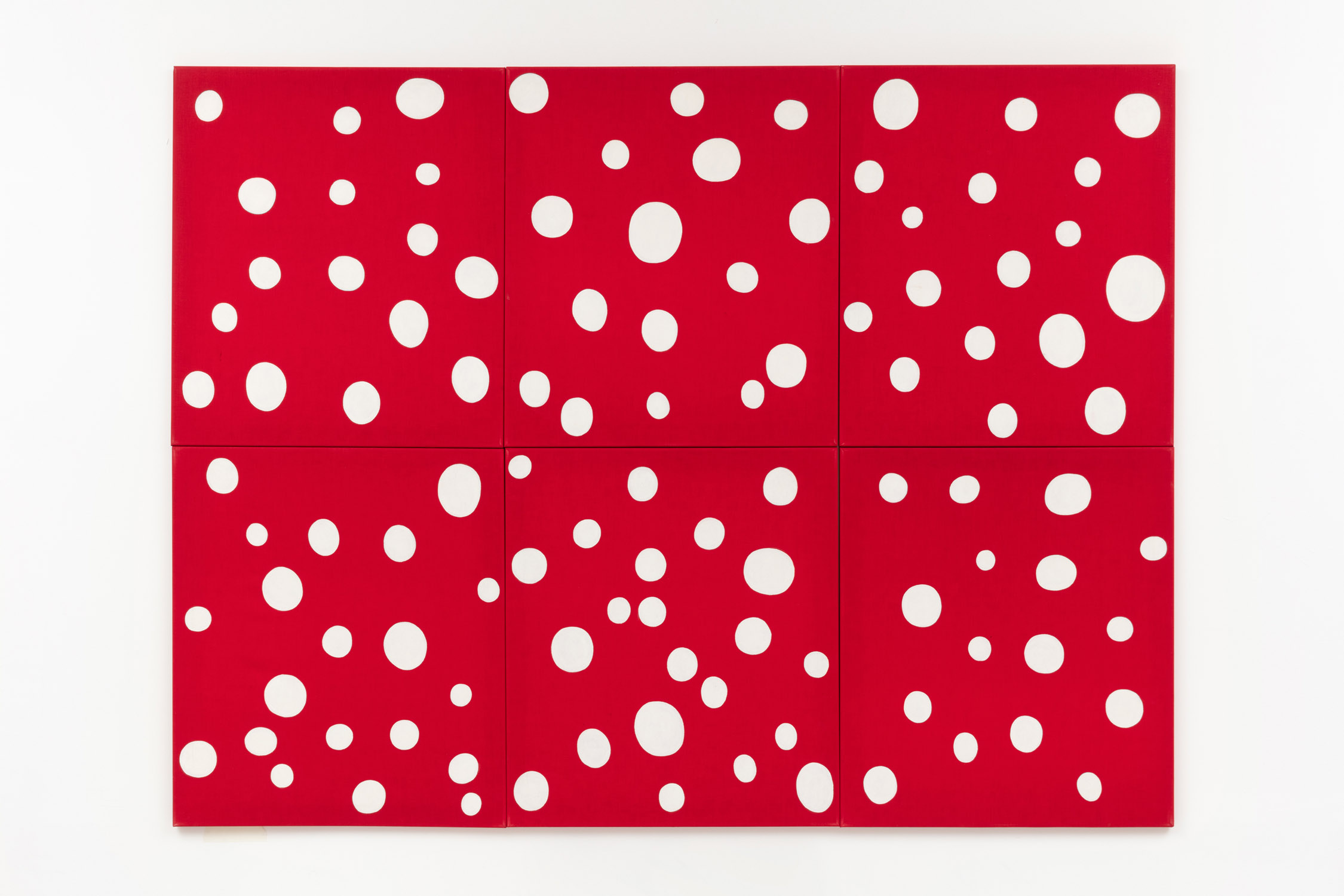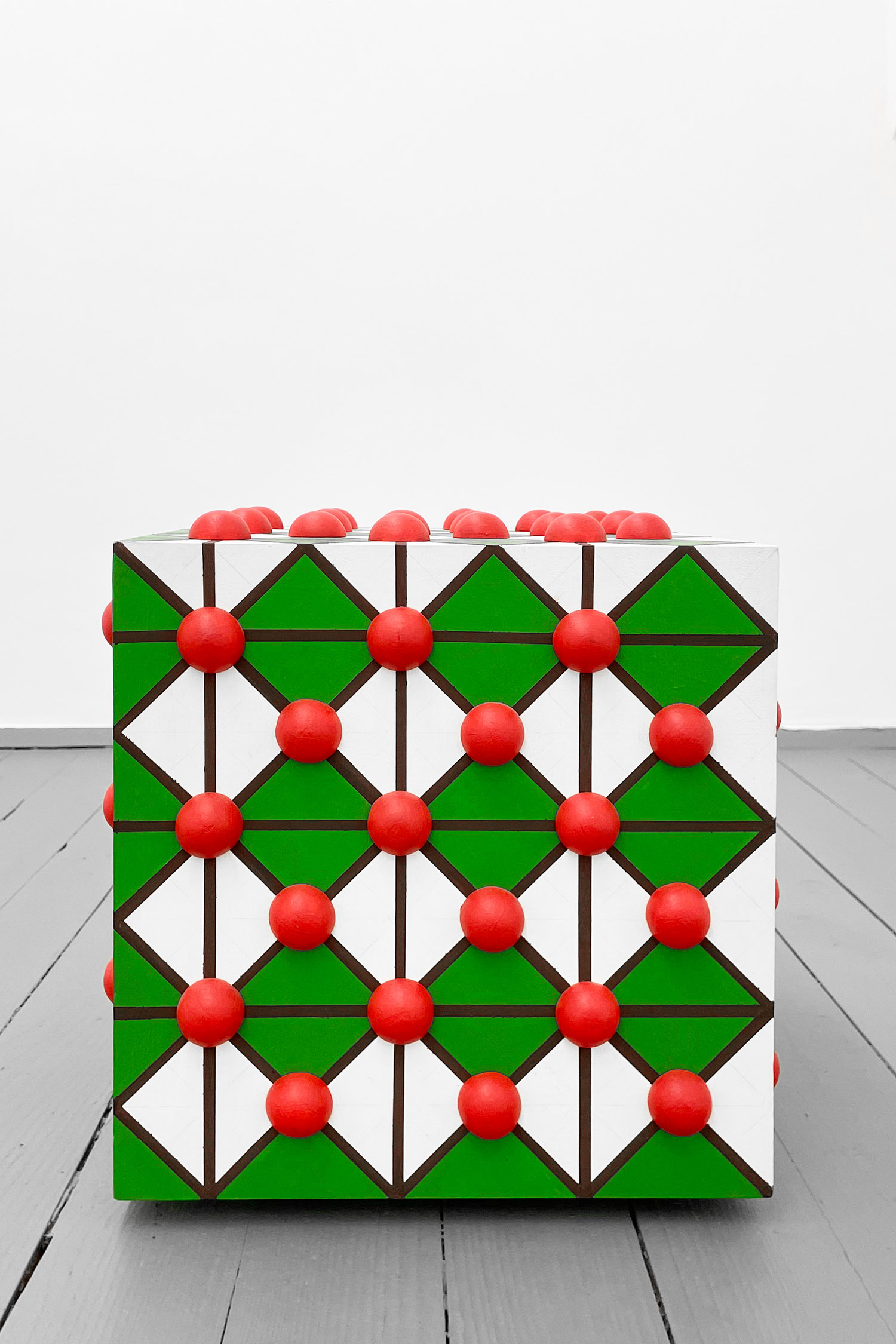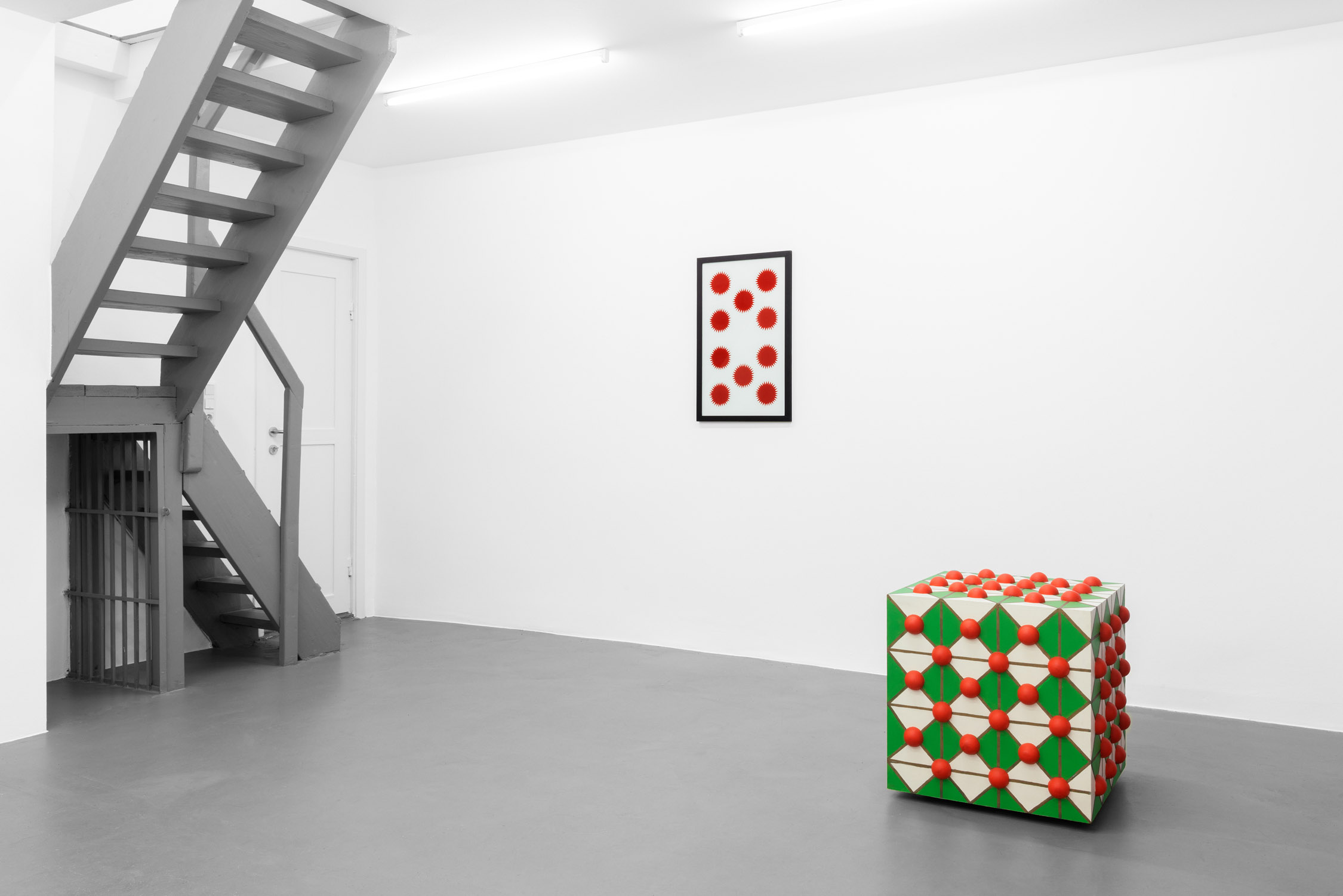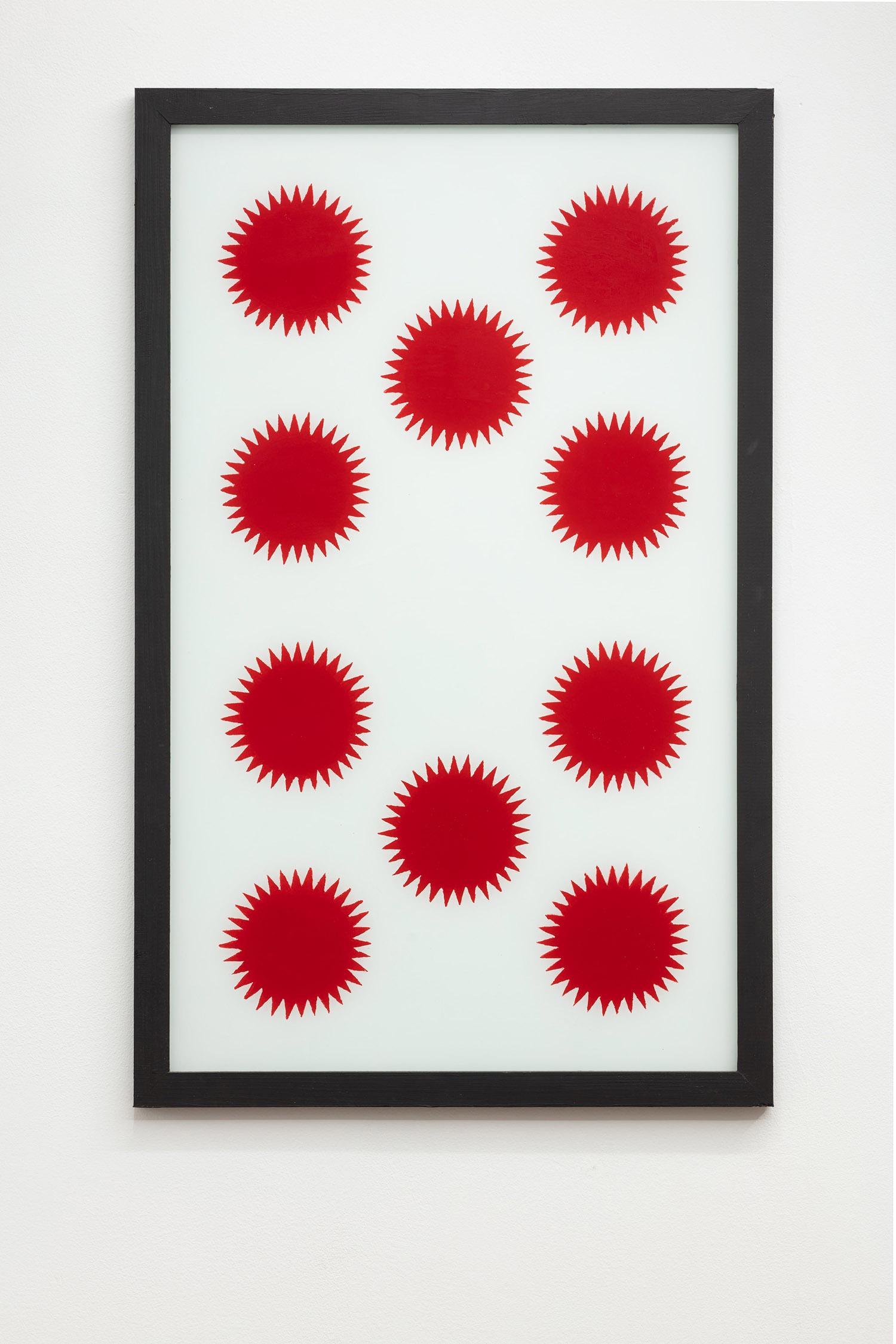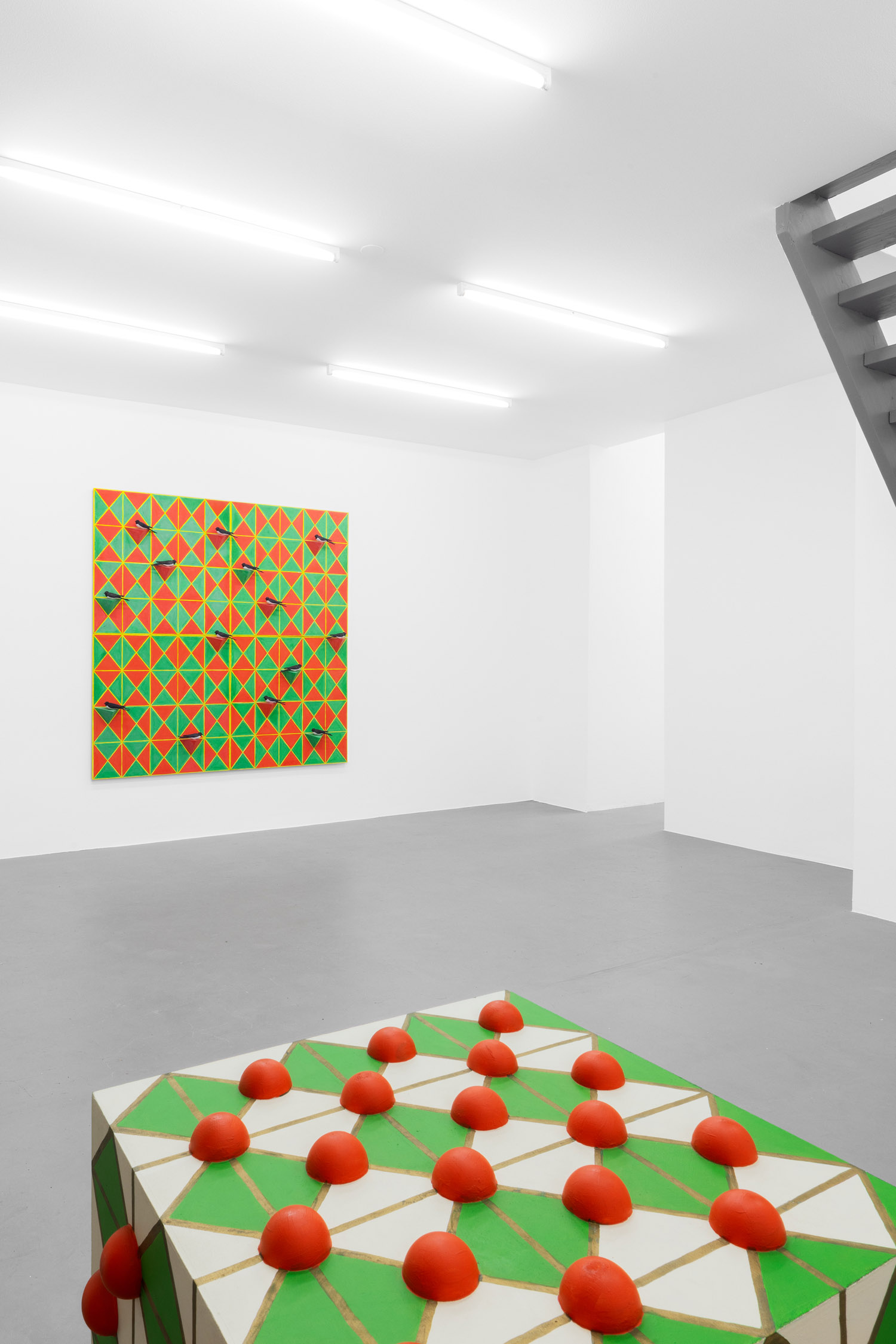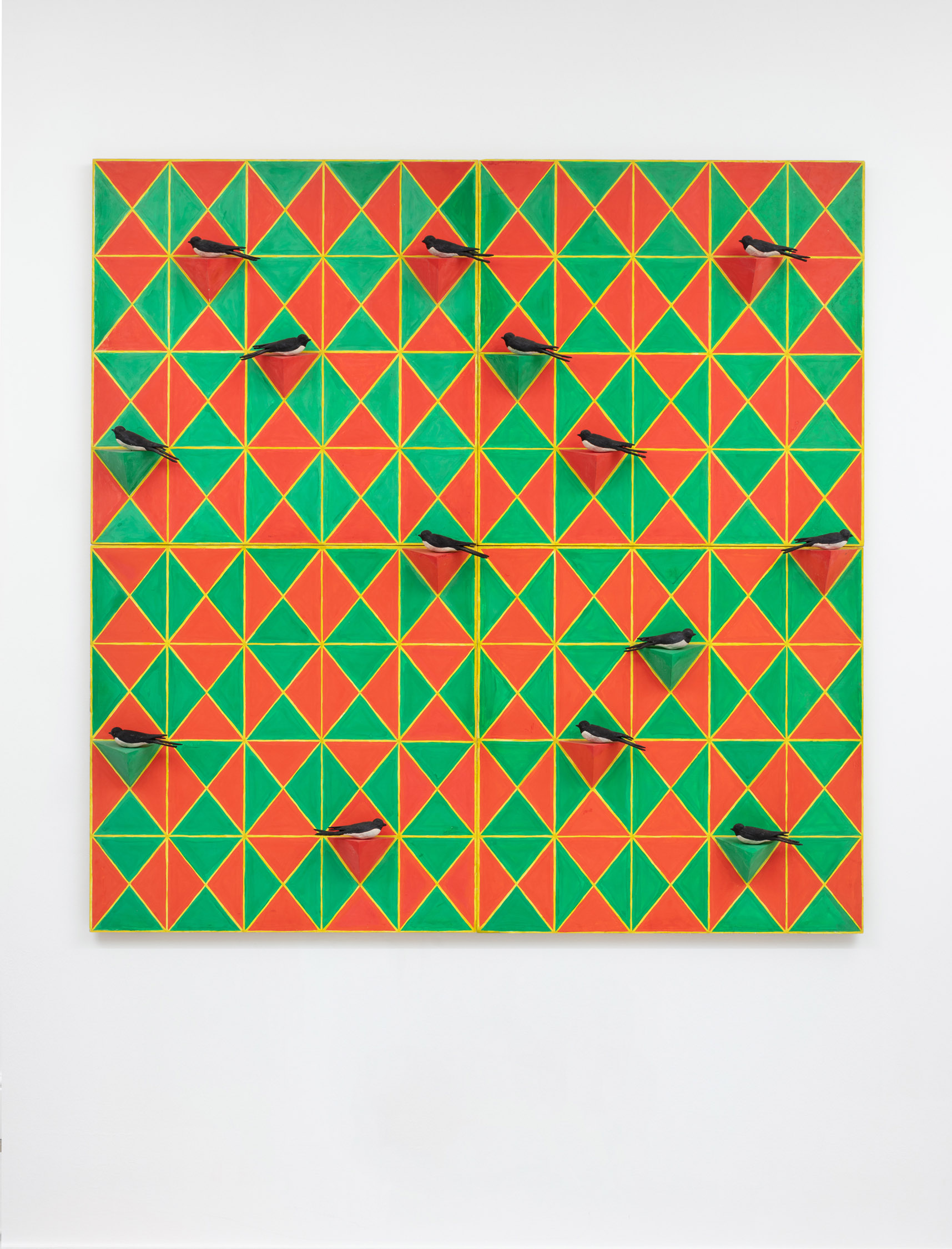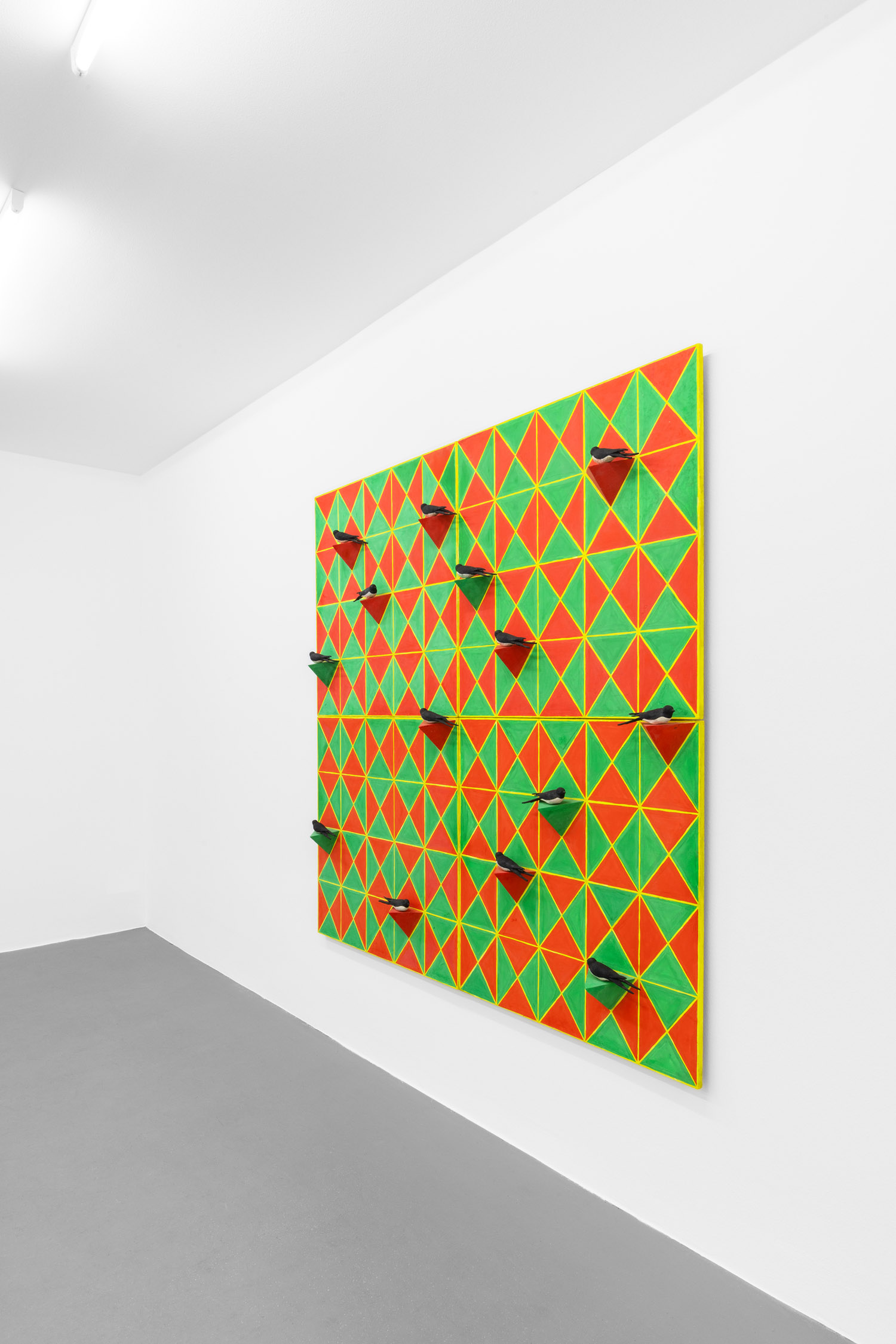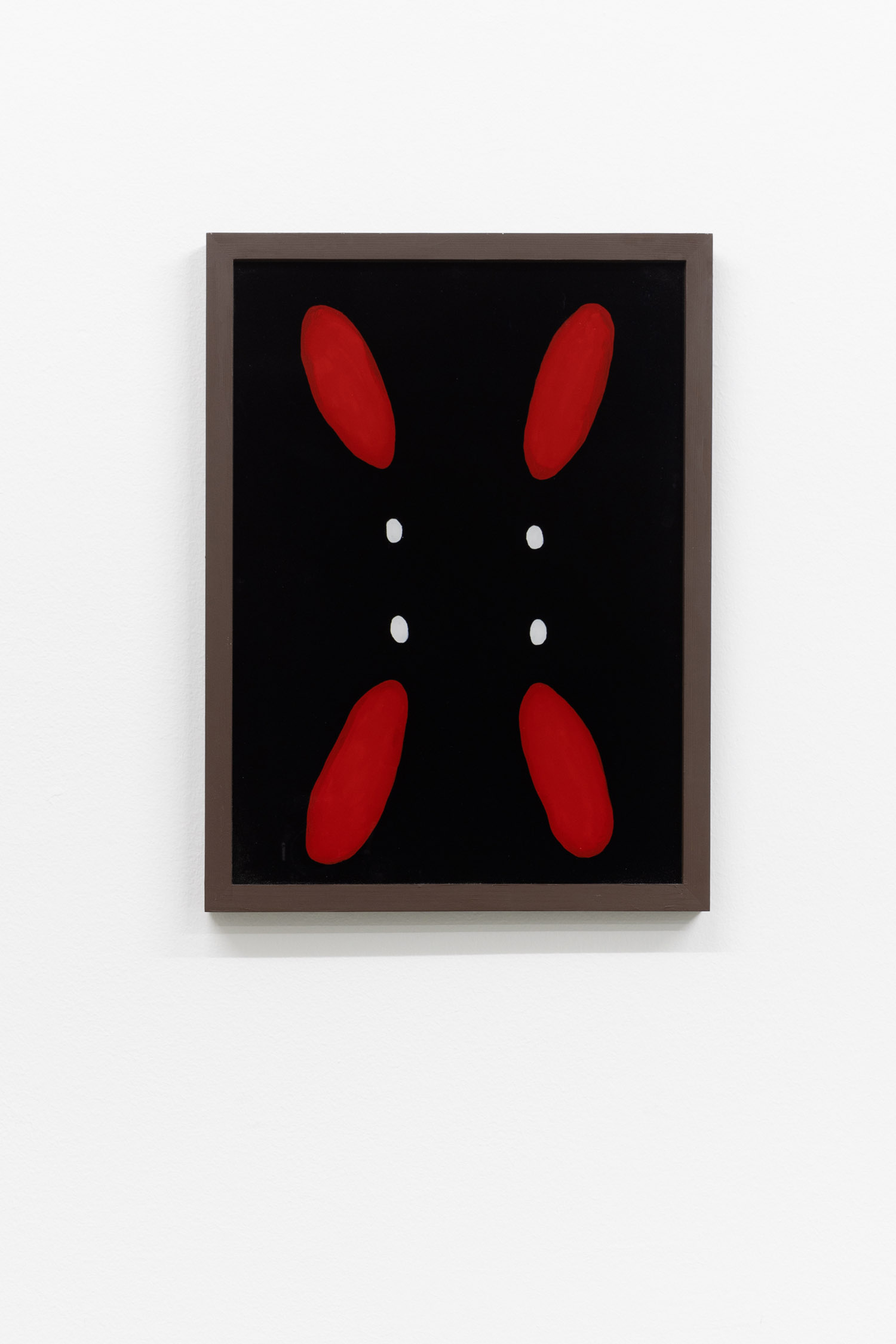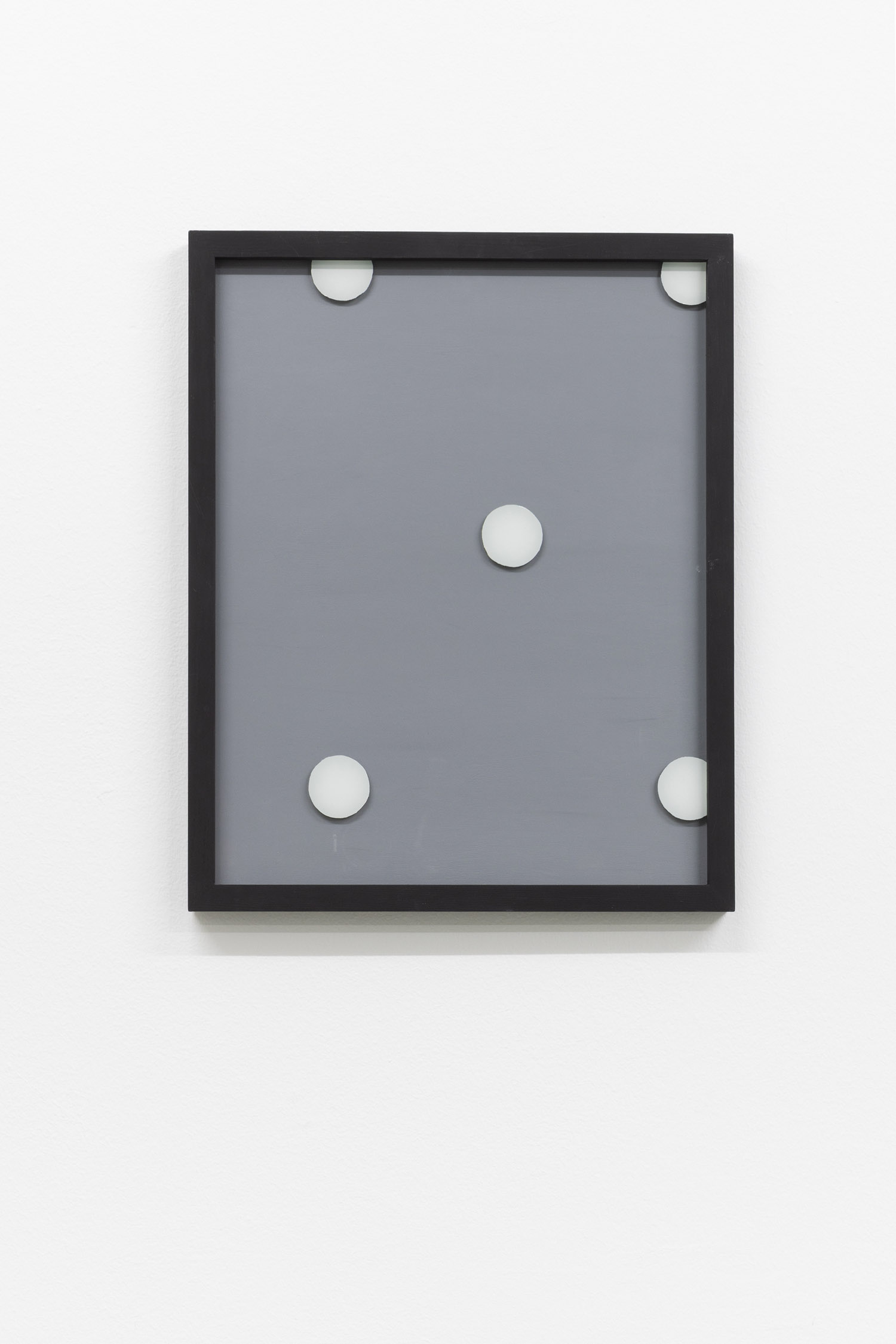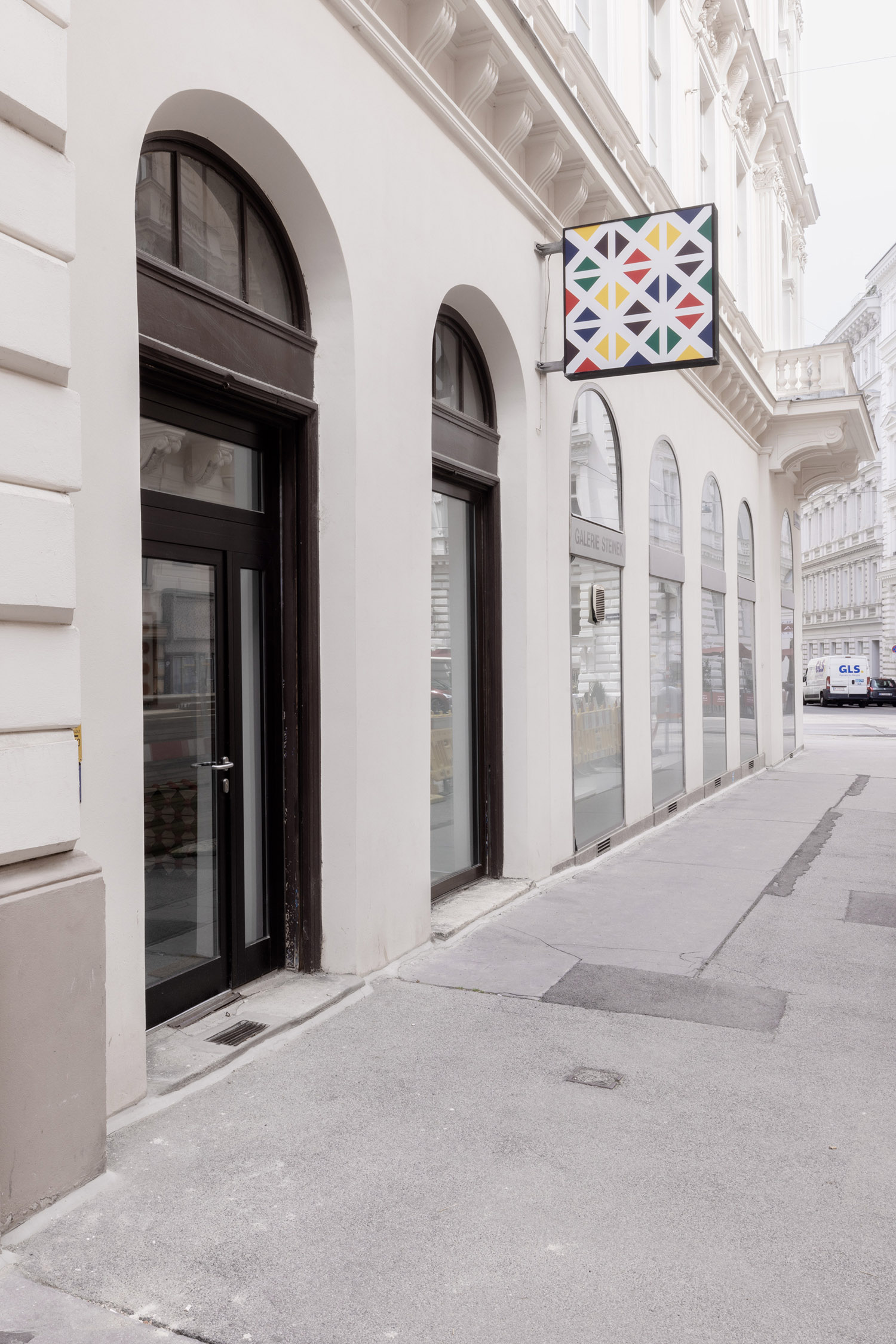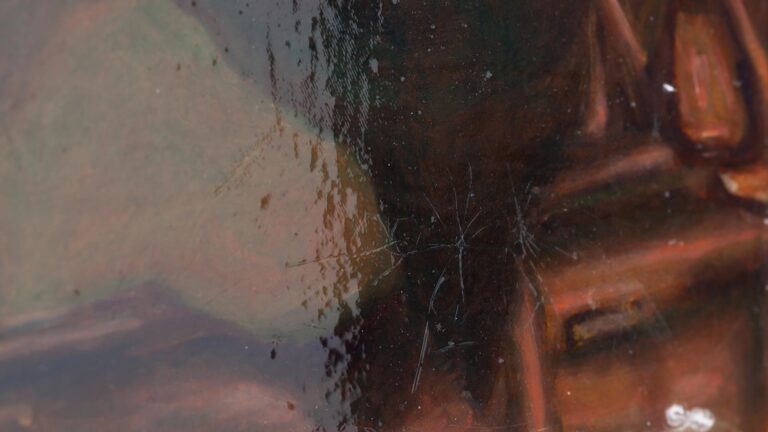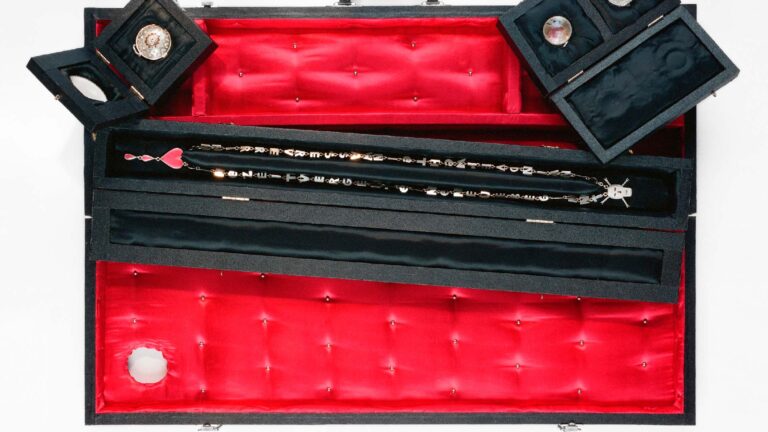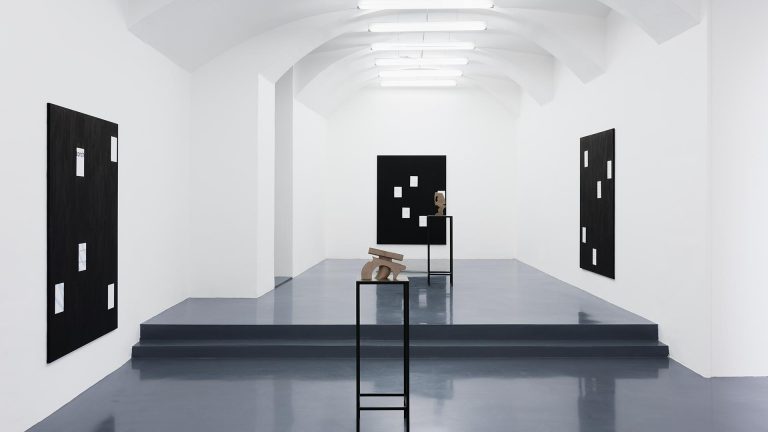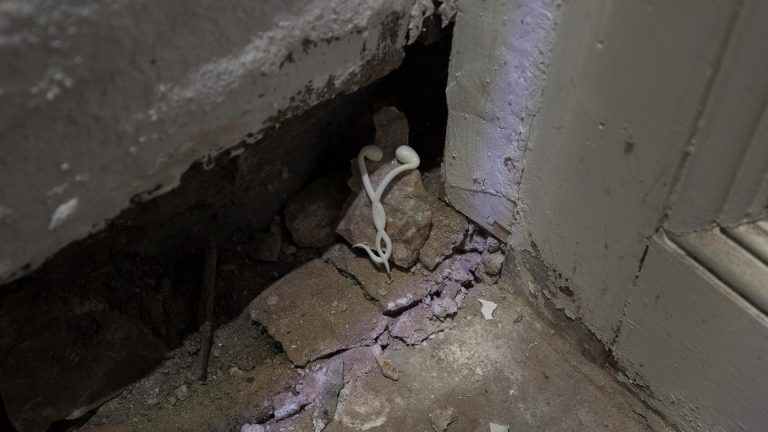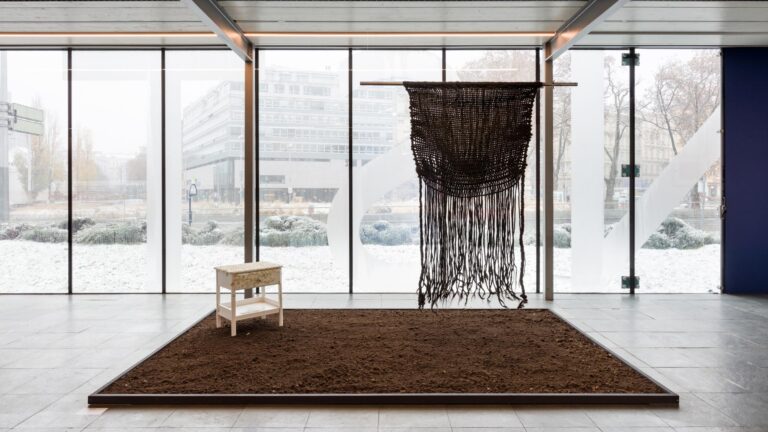Artist: Elke Denda
Exhibition title: Schleifen
Venue: EXILE, Vienna, Austria
Date: June 6 – July 13, 2024
Photography: all images copyright and courtesy of the artist and EXILE, Vienna
Elke Denda’s exhibition Schleifen at EXILE, Vienna provides a continuation of the artist’s exhibition Projection at Josey, Norwich in May 2023. The works displayed span a time period of almost thirty years ranging from 1986–2024. Installed across EXILE’s two gallery floors, the exhibition comprises panel paintings, reliefs, floor sculpture and reverse glass paintings; Denda’s video work ZIB (2008) is available to view on EXILE TV. The exhibition includes two new reverse glass paintings titled Schwarzwaldbild (Black Forest Painting) (2023) and Punktebild 3D (Dots Picture 3D) (2024) – the artist’s first new works after a 15-year hiatus. Denda’s oeuvre offers a unique stance on a recent history of abstract painting and challenges attitudes towards decoration, ornamentation and display through schematic geometry, animal iconography and motifs often borrowed from her childhood.
Denda’s reverse glass paintings are inspired by a folk technique made popular in the nineteenth century to paint devotional imagery. Motifs applied on the reverse of the glass in acrylic paint appear bold and vivid viewed through the frontal glass surface. Beginning in 1986, Denda produced these glass paintings continuously for nearly two decades. Two works from this period 10 Rote Sonnen (10 Red Suns) (1989) and Zigarrenbanderolenbild (Cigar Bands Picture) (1989) are included in the exhibition.
Installed on the lower floor, Schwalbenbild (Swallow Picture) (1986) extends the planar pictorial surface into three dimensions: an array of simple cast swallows perch on diamond ledges extruded from a commedia dell’arte harlequin pattern ground. Installed in the upper gallery, the panel painting Punktebild (Dots Picture) (1986) creates an immersive space of encounter. These works of individual panels might, it seems, be added to or subtracted from. Thinly painted on light cotton fabric, Punktebild, borrows its tessellated abstracted motif from a toadstool (Fliegenpilz).
EXILE presents for the first time both of Denda’s Noppenwürfel (Dimple Cube) (1987) floor sculptures. The sculptures – one a maquette of the other – provide an insight into the artist’s ongoing fascination with repetition and remaking. Freed and transformed from the systems present in the two-dimensional relief works such as Schwalbenbild, they are a three-dimensional exploration of Denda’s unique abstract language. These searing volumetric objects combine a language and form developed between these works in an intensely productive period of painterly inquiry for Denda.
Presented online and accessible via the website, Denda’s 2008 film ZIB is a 52 seconds ‘supercut’ that fixatedly tracks spherical forms as they appear in disparate appropriated clips from television and cinema. The spheres as focus for, and symbol of, a restless gaze disrupts intended pictorial hierarchies of subject and object, foreground and background. Everything that is not the sphere becomes a background to be montaged into a world of endless audio-visual-spatial boundaries, limited, nonetheless, by the frame. Emblematic of the exhibition’s title Schleifen ZIB is a metaphorical loop in meaning, time and thinking.
Viewed as reproductions, squinting, or at a distance, Denda’s works appear to share a hard, inhuman manufactured edge, produced in collaboration with machines. Looking more closely, however, slickness breaks into a wholly more bodily facture: in the paintings uneven blooms of colour are subtended by loose underdrawings coming out at the sides – ‘subtle eccentricities’, as one commentator put it. The lines of the reverse glass paintings bubble and fizz; their painted wooden surrounds are not frames but part of the pictorial composition. Painterly application oscillates between manufacture and facture – between machine and human hand – the personal and impersonal – the physical and the embodied – in a way that is deeply affecting. Denda has an extraordinary ability to conjure a certain irreducibly human emotionality in a commodity language of graphic reproduction.
Abstract elements in Denda’s pictures are typically anchored in actuality. Familiar images, selected for their personal resonance, become symbols that constitute, as she puts it, ‘an alphabet of the important elements of life’. Stripping back is, for Denda, a device to work towards abstraction rather than being abstraction itself. In the reverse glass paintings the imagery might be excerpted and transformed from some thing in the world, for example a particluar cherry tree in the two versions of Noppenwürfel on display across the galleries. The only new work made after her hiatus, exhibited here, Schwarzwaldbild (Black Forest Picture), provides a useful counterpart to the earlier version. For Denda, the works must function as pictures on their own terms while simultaneously suggesting the possibility of endlessness, as if the motifs presented are just excerpts held by the frame that reach far beyond.
A viewer with an interpretive frame informed by modern abstract art will not be equipped for the register that Denda’s works demand. Stripped back and simplified, the non-specificity of the images teases at recognition that never quite arrives at its referent. Looking at the work on display at EXILE and previously at Josey their literalism is striking: a series of disarming disclosures. Everything that is the matter is present. The work at times feels hyper-prescriptive, as if answering more questions than they ask and in a way that is often contrary to contemporary painting, giving the viewer an abundance of their internal workings and the parts necessary for understanding: they reveal everything. The amplification of stylisation and rigid formality has the effect of hardening the work into ornamentation, seemingly deflecting any further interpretation. Yet, paradoxically, it’s actually at this apex where they become imbued with the thing they seem to be conscious of deflecting.
Writing about Denda’s work in 1988, the art historian Julian Heynen noted the ‘oscillation of decorative form and symbol’ which, he goes on, is ‘nowhere ironic or polemic against itself’. Heynen finds it necessary to defend Denda’s work against charges of irony, naivety and the ‘problem’ of decoration. In the meantime, forty years later, it is no longer necessary to defend against such things. Characterised by a refreshing total absence of irony, Denda’s technically uncomplicated take on abstraction is staggering in its simplicity and complexity.
– Josey
Born 1956 in Oberhausen, Germany, Elke Denda studied at the Kunstakademie with Fritz Schwegler and currently lives in Düsseldorf. Selected solo and group exhibitions include Projections, Josey, Norwich (2023), We are stardust, we are golden, Galerie Johnen + Schöttle, Cologne (2008); Galerie Lindig in Paludetto, Nuremberg (2002); Salzburger Kunstverein, Salzburg (1997); Humpty-Dumpty’s Kaleidoskop: A New Generation of German Artists, Museum of Contemporary Art, Sydney (1992); Anni Novanta, Galleria Comunale di Arte Moderna, Bologna (1991); Galerie de Lege Ruimte, Brugge (1990); Museum Schloß Hardenberg, Velbert (1988); Museum Haus Esters, Krefeld (1988); Galerie Johnen & Schöttle, Cologne (1985); Galerie Rüdiger Schöttle, Munich (1984).

